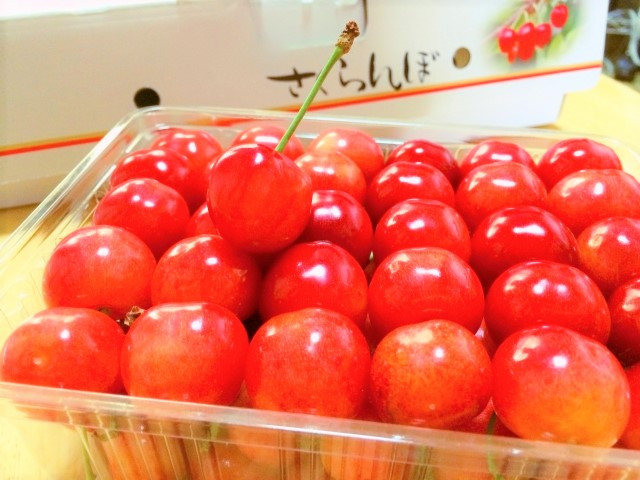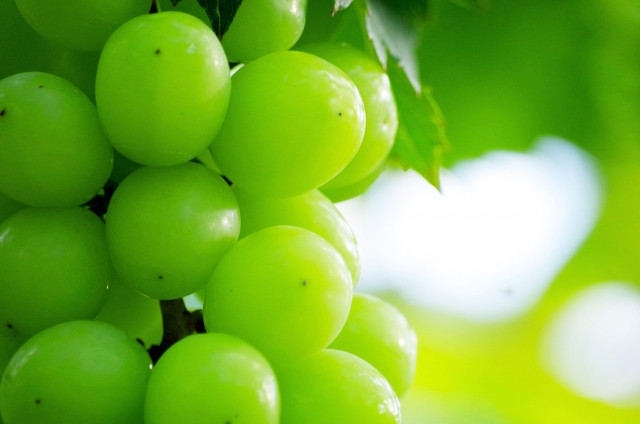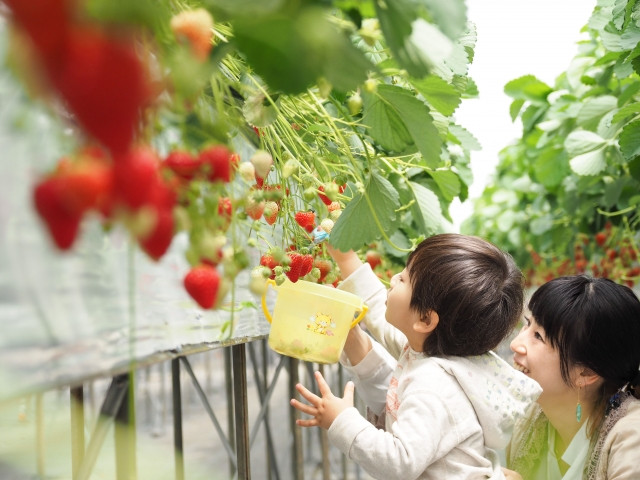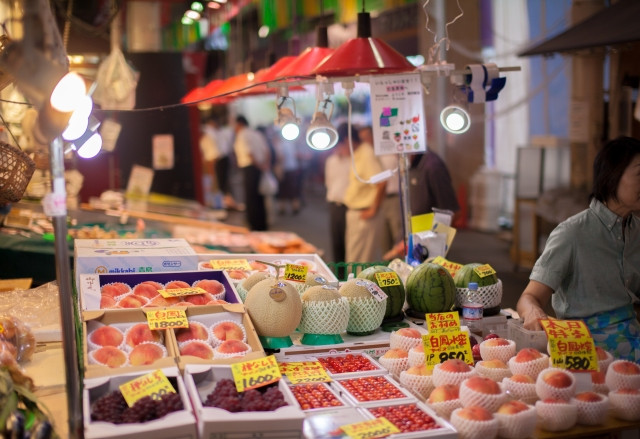Without tasting the seasonal fruits Japan has to offer, no trip is truly complete! Japan has different seasons that accommodate a variety of fruits, but accumulating reasons can make fruits pricey in the country, for a good reason. Find out why fruits in Japan are also famous for their prices.
Table of Contents
- Why are fruits in Japan expensive?
- Variety and cost of fruits in Japan
- Fruit Activities You Must Try
- Summary
Why are fruits in Japan expensive?
Japan offers a lot of things to both locals and foreigners alike. Aside from it offering a great experience for tourists with unique cultural activities - Japan also offers the freshest produce and fruits available! Fruits in Japan are best enjoyed during their peak seasons. For example, strawberries are very popular during the onset of the spring season. Melons and watermelons also welcome the summer season - which are refreshing fruits to eat to beat the sweltering summer heat! During autumn, pears and persimmon dominate with their earthy flavors. Lastly, citrus fruits are quite popular during the winter season. More are listed below in the article.
Fruits in Japan are often given as gifts when visiting a person’s house or when sending a seasonal greeting to someone. And people want to give fruit in the very best quality, which is why they are considered to be very precious and expensive gifts. There are many reasons why fruits in Japan are expensive, and it starts with how planting and taking care of fruits is a tedious process, and farmers providing extra care and attention to make sure that fruits in Japan are grown to perfection.
And putting regular fruits sold at supermarkets aside, with the technological advancement that Japan offers, certain fruits are even bred to auction and deemed as prizes like the heart-shaped watermelons, the giant strawberries, some that are as big as a tennis ball, white strawberries and the huge "Ruby Roman" grapes. These fruits can cost up to an insane amount that can equate to a diamond necklace.
Writer's Pick
Variety and cost of fruits in Japan

Some Japanese farmers prefer to personally manage their farms to control the production of quality fruit. These farmers usually took years to perfect and painstakingly develop a different variety of fruits in Japan. Here are some of the notable ones.
Note: The Ministry of Agriculture, Forestry and Fisheries in Japan categorizes melons, watermelon and strawberries as vegetables. However, as the general public considers them as fruits, we will include them in our list.
※The Ministry of Agriculture, Forestry and Fisheries, "Fruit trees"
Unique and Luxury fruit in Japan
Heart-Shaped and Square Watermelons
Watermelons are typically round, green, and juicy. In Japan, however, they have a special variety of watermelons in square and heart-shaped watermelons! Square watermelons are typically grown by farmers in a cube container that forces the fruit to adapt to the square contour. The farmers thought that square watermelons would be easier in terms of shipping and transporting the fruit from one place to another, as they are often sent as gifts, and it would also be easier to store in people’s refrigerators. When you cut open the watermelon, however, it still looks like an ordinary watermelon, but is considered inedible and more for decoration purposes for department stores. Square watermelons are typically priced at 10,000 yen apiece in Japan and they were even given a geographic indication (GI) label by the government.
Ruby Roman Grapes
Ruby Roman Grapes are considered royal grapes in Japan as they are meticulously grown by farmers with exact specifications in terms of its color, weight and sugar content. It’s about twice the size of a Kyoho grape, the other but much more common large Japanese grape. Ruby Roman grapes are priced at around 100,000 yen per bunch but have been auctioned as high as 1.1 million yen in 2016 according to CNN.
※ CNN, “$27,000 melons? Unwrapping the high price of Japan's luxury fruit habit”
Taiyo no Tamago Mangos
Taiyo no Tamago (Sun Eggs or Eggs of the Sun) Mangoes from Miyazaki Prefecture are a slightly sweeter version of your regular mangoes whose sugar content is controlled at 15 percent. These are usually priced from 5000 to 8000 apiece, but have been sold at a price as high as almost 200,000 yen per fruit.
※Japan Brand, Miyazaki Mango Products
Cherries

Cherries, especially Sato Nishiki cherries in Japan are very popular and can be quite expensive, ranging from 500 yen up to 1000 yen per cherry. Sato Nishiki cherries are very popular in Japan amidst its cost because of its texture, aesthetic, and flavor, as well as its ability to stay unspoiled for a longer time.
※Japan Brand, Cherries
Strawberries
Sweet strawberries are grown in a controlled greenhouse. Instead of sunlight, some farmers grow it using heating equipment to control the temperature and elevated cultivation to produce rich color and glossy texture in a non-stressful environment. A large, remarkable single berry weighing 100 grams has sold before at 50,000 yen! Also, an auction in Osaka sold 108 strawberries for a total of 1.5 million yen in 2020.
※Produce Report, 108 Strawberries Sell for $13,700 at Japanese Auction
Yubari Melons
In 2019, two Yubari melons were sold at a jaw-dropping 5 million yen. The famous Yubari melons from Hokkaido are very expensive because of the care and effort that goes into growing these fruits, where each planting process is personally and tirelessly handled with care by the farmers. Other types of melons are also prized as the perfect gifts and can go up to 20,000 yen on a normal basis.
※Business Insider, These melons can sell for as much as $22,500 each in Japan
Variances between fruits in Japan as compared to other countries
The fruits in Japan are expensive, but it is mainly attributed to the care on cultivating to perfection and the effort that farmers invest in making sure that these fruits are of top premium quality. There is a strict quality control process that fruits in Japan must pass in order to be sellable to the market. The quality controls would refer to the sugar content, the size, the texture, and even the color! Because of these stringent measures, Japanese fruits have a considerably better taste as compared to other countries.
Seasonal Fruits in Japan

While it is true that Japan offers some of the most expensive fruits in the world, Japan also has a variety of fruits that are more cost-efficient (but still expensive compared to the rest of the world, perhaps) and are available at the local supermarkets around certain seasons. Let’s take a look at the list of some of these fruits. However, don’t be surprised if each fruit costs a minimum of 100 yen.
Fall Season
-
Apples
-
Kiwi - continues into winter
-
Pears
-
Persimmon (kaki)
Winter Season
-
Citrus fruits like
-
Yuzu
-
Kinkan (kumquats) - continues into spring
-
Mikan / Satsuma oranges
-
Spring Season
-
Strawberries (winter to spring)
-
Plum
Summer Season
-
Biwa
-
Peaches
-
Pineapple
-
Blueberries (these tend to be expensive)
-
Melon
-
Watermelon
Please note that these seasons may vary by area as well as the availability of the fruit as certain areas have to pay more to import the fruit from across the country or overseas.
Fruit Activities You Must Try

There are several activities that involve fruits that tourists can enjoy while in Japan. For example, fruit picking has been increasingly popular in Japan where tourists can go to a strawberry, cherry, apple farm or a grape vineyard (essentially whatever is in season!) and pick fruits while enjoying the beautiful scenery that Japan has to offer.
Another popular and fun activity to do in Japan is Suikawari or watermelon splitting where people are blindfolded and try to split a watermelon in half using a stick. Suikawari is a game played with friends and family usually at the beach, parks, or family gatherings.
Summary

The food culture has played a significant part in the differences between cultivating fruits in Japan and other countries. It sometimes becomes an obsession of the Japanese farmers to create a certain level of perfection for their produce, a prize of satisfaction that they only truly understand. The cost of luxury fruit is indeed astonishing, maybe not for local tourists and some foreigners to afford but worth keeping a note of when visiting Japan, to try the affordable varieties of fruits available at the local markets.
And one final note: A problem in the agricultural industry in Japan currently is the aging population of the local farmers as well as the shortage of laborers. That is why farmers in suburban areas are hiring more laborers from foreign countries to assist them in agricultural work. If you are interested, please check out our article about working on a fruit picker in Japan.































